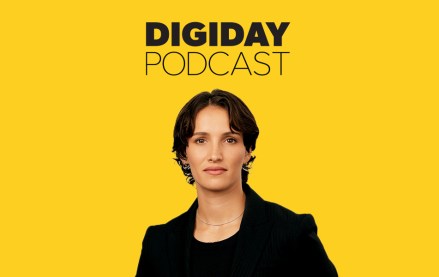Tech platforms like Facebook and Twitter cool interest in broadcasting live sports

Contrary to the hype two years ago, the sports industry is still waiting for the great rights grab from the tech platforms. The likes of Facebook and Twitter have cooled their interest in becoming sports broadcasters.
When Amazon, Facebook, Twitter and Google’s YouTube duked it out for the right to show NFL football games on Thursdays in 2017, the industry braced itself for more of the same. Whenever there were big sports broadcast rights up for grabs the likes of Amazon, Facebook and Google were said to be interested. Ahead of the last auction for rights to show Premier League matches in the U.K., bids from both Facebook and Amazon were expected to escalate the financial boom for the top clubs. But the rumored interest from tech firms failed to materialize into big bids when the rights were sold in 2018. In fact, Amazon secured a cut-price £90 million ($116 million) deal to show 20 Premier League games for three seasons in the U.K., while Facebook spent £200 million ($259 million) to show all 380 matches per seasons from 2019 to 2022 in Southeast Asia. In contrast, Sky paid £4.5 billion ($5.8 billion) to show most Premier League matches over three seasons in 2018.
Both platforms secured rights to show the most lucrative football league in the world. And yet, those deals were smaller than many anticipated. They were emblematic of how circumspect the platforms are to spend millions on rights to the most popular sports in the most mature markets where the monetization potential is high risk with short windows of opportunity. Rights that would’ve been regarded as targets for big platforms two years ago, like the British broadcast rights to show the Champions League football tournament, seem to have dropped off their radars. The platforms are no longer in contention for the most expensive rights.
“There’s no shortage of sports content across social networks, but the behavioral data shows consumption tends to be in a shallow way. They don’t lend themselves well to long-form content consumption,” said Phil Stephan, director at sports marketing agency Two Circles. “Users don’t engage with content for longer than a few minutes, and this will be a hard behavior to break if they look to push long-form live content on their platforms.”
Facebook has no plans to place any big bids on sports rights in the near future, said director of global sports partnerships Peter Hutton. Rather the strategy — at least for now — is to work with broadcasters, not become a big rival to them. Last month, the social network signed a deal with Fox Sports to create exclusive content for Facebook Watch, for example. Although, despite its work with sports broadcasters, Facebook hasn’t ruled out rivaling them completely. When the social network has bought rights to show big sports, whether it’s La Liga in India or the Premier League in Thailand, Vietnam, Cambodia and Laos, it’s been in emerging markets where the cost of acquiring the rights is outweighed by Facebook’s ability to reach the largest audiences in those markets.
“Streaming sports isn’t just about the direct advertising or sponsorship return, but also how we can help the rights holder monetize their audience,” he said. “It’s not a question of us versus broadcasters. We can be a free-to-air funnel for audiences and can benefit broadcasters when it comes to how they find their next audiences and commercial revenues.”
It’s a stark contrast to where Facebook was a year ago. Back then, the social network was big on acquiring sports content — both live and original. A rumored £10 million ($13 million) deal to fund a reality show featuring football star Cristiano Ronaldo never materialized, while similar deals were cut at the last minute.
“We were working on an original content deal with Facebook last year, and in a short space of time, they went from being unbelievably keen to get the deal done to telling us their strategy had changed,” said a sports exec on condition of anonymity. “Now, the focus is on programming that someone else has already built the brand for and taken all the risk. Effectively, they want the content around the main event on their platform, not the event itself.”
Twitter’s position has also changed in the sports world. Twitter was arguably the first of its peers to go big on sports broadcasts in 2016 when it bought the rights to show the NFL’s Thursday Night Games. Since the season-long deal ended, Twitter hasn’t pushed for big sports rights in the same way again. The money opportunity just isn’t there now richer rivals have entered the picture.
“We’re not in this game to turn over any tables in the broadcast market,” said Theo Luke, director of content partnerships in EMEA at Twitter. The micro-blogging site isn’t big enough to compete for the rights to broadcast major sports, said Luke.
Instead, Twitter wants to get broadcasters to put the rights they’ve bid for on the platform, rather than buy them itself. Deals to show sports footage from Univision, ESPN, CBC Sports and Eurosport have been announced so far this year.
“Our model is designed to be sympathetic to broadcasters,” said Luke. Twitter has 950 content partnerships worldwide and its payouts to them increased by 60% year over year, said Luke. “The focus is to find those opportunities where we can work with a partner on those live sports that we know there are strong conversations happening around,” he added.
But live sports broadcasting is still inherently tied to an interruptive advertising model, arguably more so than any other area of entertainment. To reap the commercial opportunity, the tech platforms need to be able to sell a chunk of ads at halftime in between overs, sets or rounds depending on the sport, said Leo Birch, content strategist at Engine. The cost-per-thousand impressions for those is so low, however, that Birch said it’s difficult to see how the likes of Facebook and Google could ever offset the huge investments needed to buy rights for major sports that tend to be country-specific, have little or no shelf life and have a limited appeal outside of a dedicated fan base.
By comparison, though tastes may change and zeitgeists come and go, documentaries, dramas and comedies are abundantly more evergreen.
Additionally, the value to advertisers of sports on tech platforms is largely reliant on being hyper-targeted and topics like “football” or “tennis” are just too disparate and broad. Certainly, there could be targeting based on other user data, but that raises questions about the technology’s ability to serve that in real time as well as how it works with major tournament sponsorship deals, said Birch.
Over-the-top players like Amazon Prime, Disney and Dazn are in the ascendancy but, when it comes to sports rights, they’re competing with an industry in linear TV that’s arguably in a tailspin for a product that’s arguably at a lifetime peak in cost. For example, the 2018 auction for domestic EPL rights resulted in a 10% drop in revenues between 2019 and 2022, the largest decline since the introduction of live football on pay-TV, per Enders Analysis. Not really a burgeoning area for Facebook and Google to bother jumping into. Meanwhile, Amazon has merely started to test the waters, quietly scoping the market for sports rights this year, but with no major sign of investment. In March, the tech platform was on the hunt for a sports exec to lead rights negotiations for sports content in Europe.
These sports will still be here in five to 15 years’ time, so why compete today with competitors who may not be in the future.
More in Future of TV

YouTube vs. TikTok vs. Instagram: What Gen Z really watches in 2025
At VidCon 2025, more than a dozen Gen Z attendees weighed in on the video apps they are most and least likely to watch.

Future of TV Briefing: YouTube gives a peek at how its recommendation algorithms work
This week’s Future of TV Briefing recaps a VidCon session during which YouTube executives and creators unpacked the video platform’s recommendation engine.

How TikTok’s ‘The Secret Lives of Mormon Wives’ landed on Hulu, with Select Management Group’s Danielle Pistotnik
The talent manager and executive producer of “The Secret Lives of Mormon Wives” joined the Digiday Podcast to break down the process of the reality show finding a home on Hulu.





